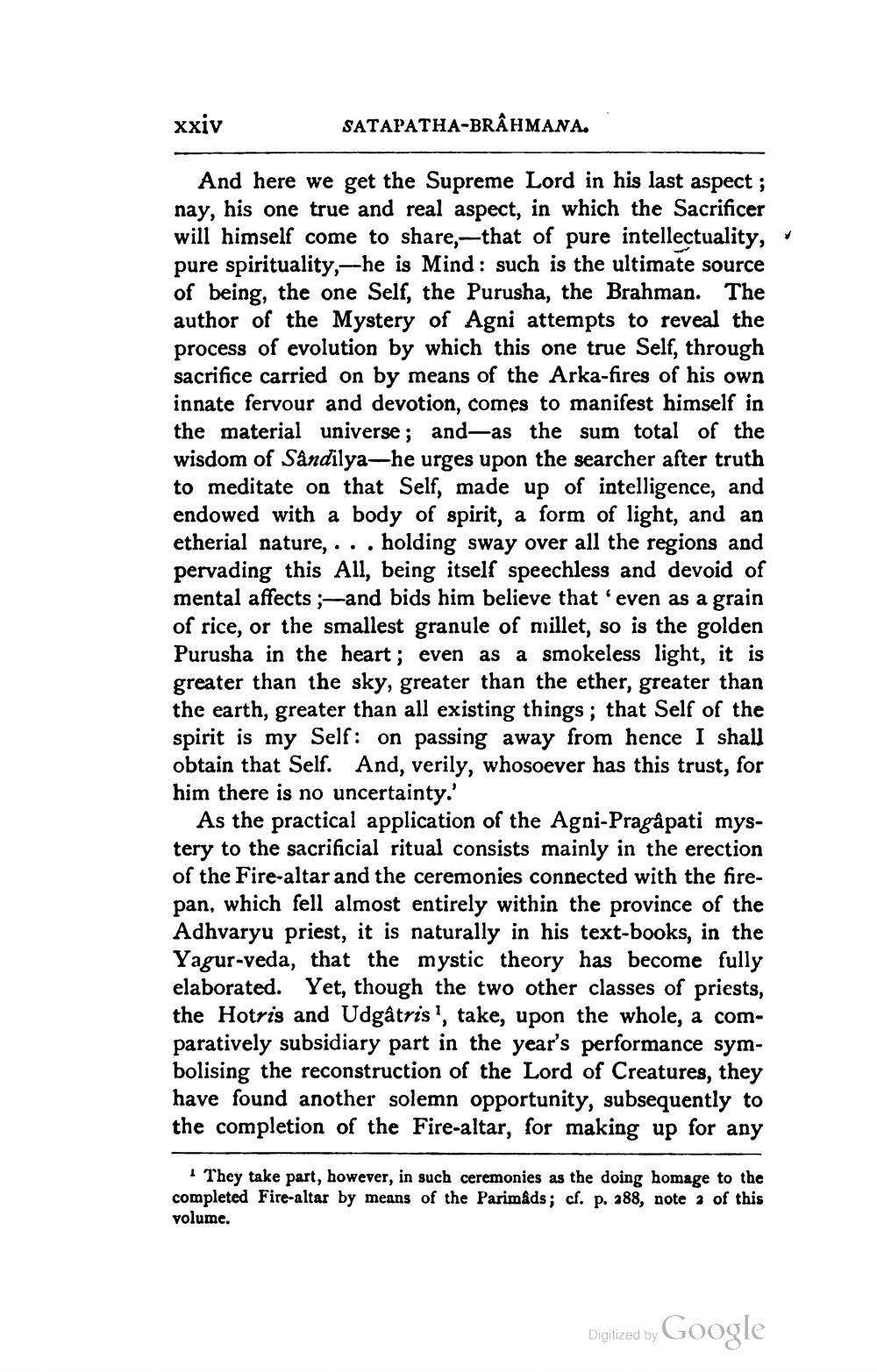________________
xxiv
SATAPATHA-BRAHMANA.
And here we get the Supreme Lord in his last aspect; nay, his one true and real aspect, in which the Sacrificer will himself come to share,—that of pure intellectuality, pure spirituality,-he is Mind : such is the ultimate source of being, the one Self, the Purusha, the Brahman. The author of the Mystery of Agni attempts to reveal the process of evolution by which this one true Self, through sacrifice carried on by means of the Arka-fires of his own innate fervour and devotion, comes to manifest himself in the material universe; and as the sum total of the wisdom of Sandilya-he urges upon the searcher after truth to meditate on that Self, made up of intelligence, and endowed with a body of spirit, a form of light, and an etherial nature,... holding sway over all the regions and pervading this All, being itself speechless and devoid of mental affects ;-and bids him believe that even as a grain of rice, or the smallest granule of millet, so is the golden Purusha in the heart; even as a smokeless light, it is greater than the sky, greater than the ether, greater than the earth, greater than all existing things; that Self of the spirit is my Self: on passing away from hence I shall obtain that Self. And, verily, whosoever has this trust, for him there is no uncertainty.'
As the practical application of the Agni-Pragåpati mystery to the sacrificial ritual consists mainly in the erection of the Fire-altar and the ceremonies connected with the firepan, which fell almost entirely within the province of the Adhvaryu priest, it is naturally in his text-books, in the Yagur-veda, that the mystic theory has become fully elaborated. Yet, though the two other classes of priests. the Hotris and Udgâtris', take, upon the whole, a comparatively subsidiary part in the year's performance symbolising the reconstruction of the Lord of Creatures, they have found another solemn opportunity, subsequently to the completion of the Fire-altar, for making up for any
- They take part, however, in such ceremonies as the doing homage to the completed Fire-altar by means of the Parimads; cf. p. 288, note a of this volume.
Digitized by Google




